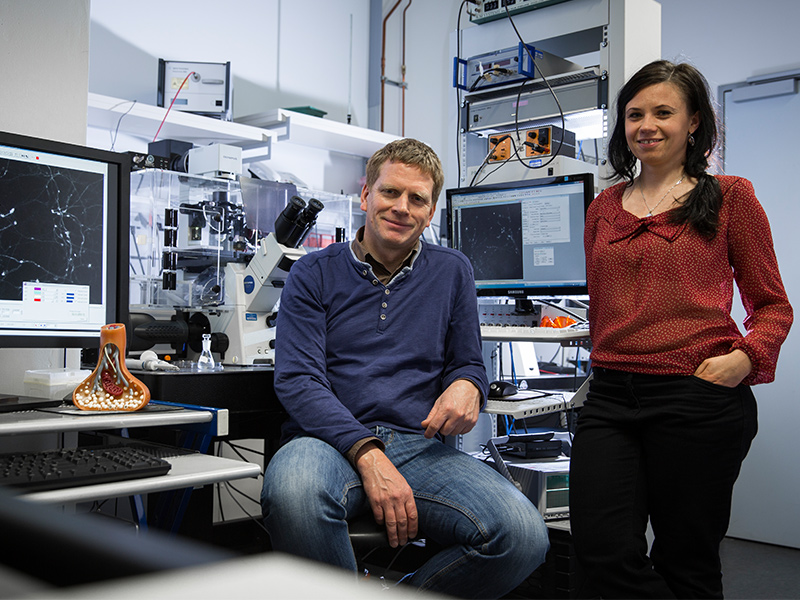 Functional dynamics of calcium channels with auxiliary α2δ subunits in CNS synapses
Functional dynamics of calcium channels with auxiliary α2δ subunits in CNS synapses
In the central nervous system Ca2+ influx through voltage-gated Ca2+ channels (VGCC) regulates a large number of neuronal functions ranging from neurotransmitter secretion, postsynaptic signal integration, and excitability to gene regulation and plasticity. The tight spatial-temporal control of intracellular Ca2+-ions inspired the hypothesis of intracellular Ca2+ micro- and nanodomains induced by VGCC, which preserve the specificity of information transfer. A prime example for this tight control of calcium are chemical synapses between neuron.
Presynaptic VGCC are essential to trigger the fusion of synaptic vesicles and have a strong contribution to presynaptic plasticity at different time scales. Factors that influence calcium channel activity are manifold and have been mainly reported for molecular interactions with the pore-forming 1-subunit or intracellular-subunits.
The auxiliary α2δ1 subunit, a primary target for anti-epileptic and anti-allodynic drugs gabapentin (GBP) and pregabalin (PG), is mainly extracellular located. All α2δ subunit isoforms are GPI-anchored and highly glycosylated extracellular proteins. Their described common function is the trafficking of α2δ1-subunits to the membrane surface.
Despite reports about kinetic changes induced by the association between α1- and α2δ subunits it remains largely unknown whether the lipid-anchored α2δ-subunits are firmly linked to α1-subunits of calcium channels (or act only as transient interacting partner at the cell surface as one could expect for a lipid anchored protein. Therefore, I like to investigate the role and functional implication of surface expressed α2δ subunits in fast and longterm (homeostatic modulation of synapse activity.
Laufzeit:
01.01.2016 – 31.12.2017
Publikationen:
Surface dynamics of voltage-gated ion channels. Heine M , Ciuraszkiewicz A , Voigt A , Heck J , Bikbaev, A. 2016. Channels (Austin)
10(4):267-81.
